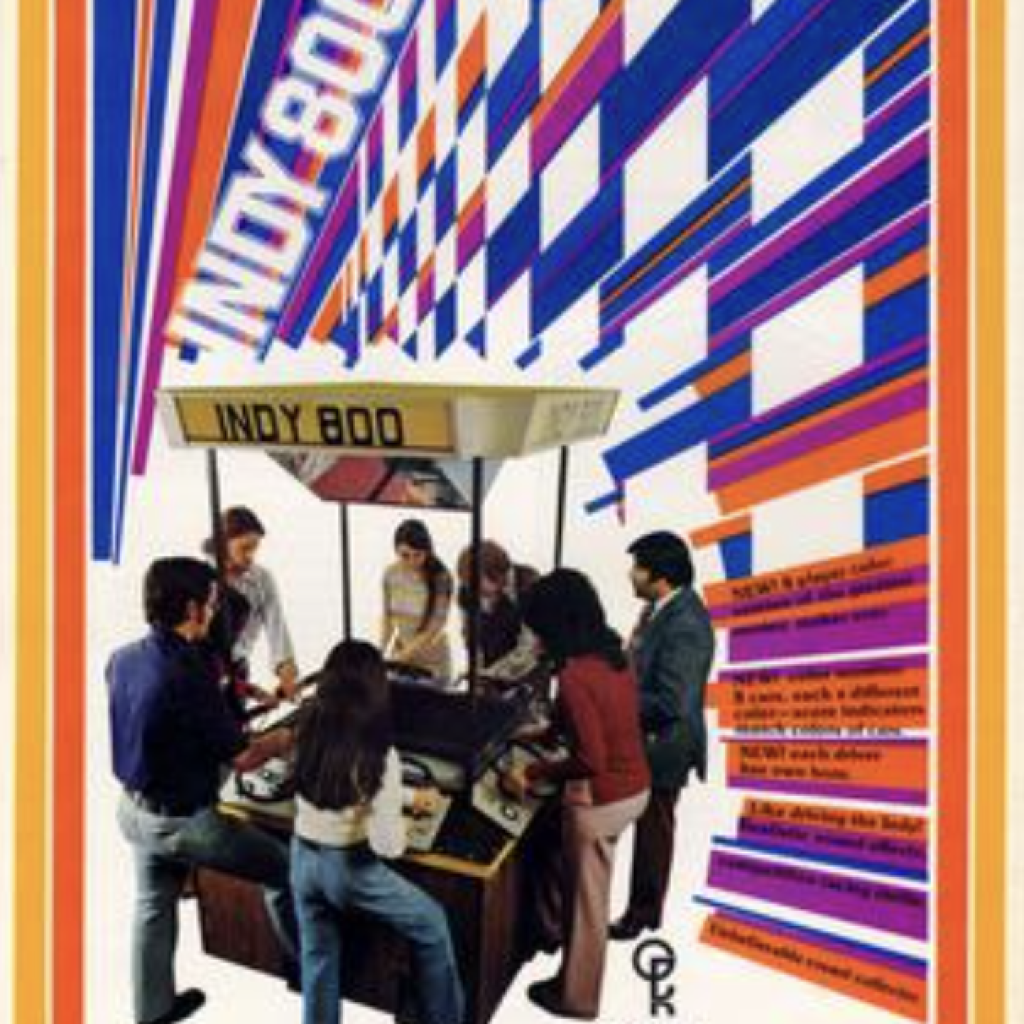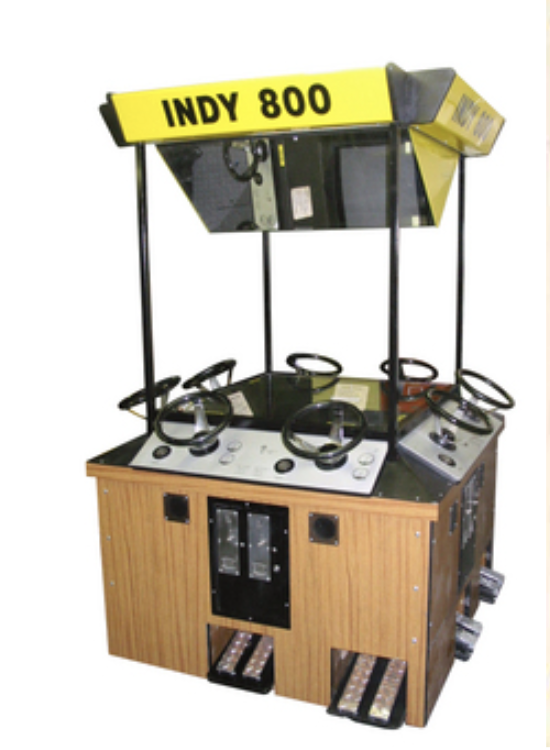We contain within us an unspoken question fueled by both our competitive natures and a drive to push ourselves beyond our limits. The question is a simple one: Am I faster than the person next to me?
Racing game fans answer that question sitting on their couches with a controller in hand as they race against online opponents hundreds of miles away. An online victory feels good, no doubt, but can it beat the experience of staring your fellow competitors down eye-to-eye after emerging from the pack victorious?
Atari’s 1975 arcade machine Indy 800 isn’t going to take home any awards for graphical beauty these days. Yet, nearly 50 years after its release, it can still hang its racing helmet on the enormity of its cabinet (16 square feet) and its 8-racer game play that has you standing shoulder-to-shoulder with the opposition. Each side of the massive machine has space for two folks to stand side-by-side, clutching a steering wheel and stamping on both a gas and a brake pedal. The one button is dedicated to honking.
Players peer down into the center of the machine where a massive CRT monitor displays the race track—such as it is. It can be difficult to see the game’s inspiration, the Indianapolis 500, in the white dots that denote the boundaries of the track. And the Indy cars require a bit of imagination to see them as more than crude, blocky approximations. Visually, there may not be much that looks like an IndyCar race, but the feel is a different story altogether. Much like a real car, acceleration is not immediate. Hitting a boundary means building all the momentum up all over again while watching your fellow racers gain the lead. Deftly navigating the track at top speeds is both risky and critical to success.


Victory doesn’t come from crossing a finish line, but rather the points players rack up as they make laps as quickly as they can, giving the game more of an endurance race feel. It’s worth remembering that while the concept of points may feel antiquated to modern gaming sensibilities, racking up a top score was the prime indicator of gaming skill in those halcyon days.
Indy 800 received an arcade follow-up in the four-player, Indy 4, in 1976. And Atari VCS (also referred to as the Atari 2600) owners got to experience the thrill of an Indy race in their living rooms when Indy 500 hit their home consoles in 1977 as a launch title.
